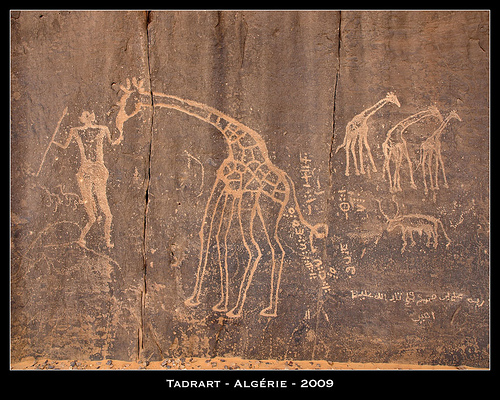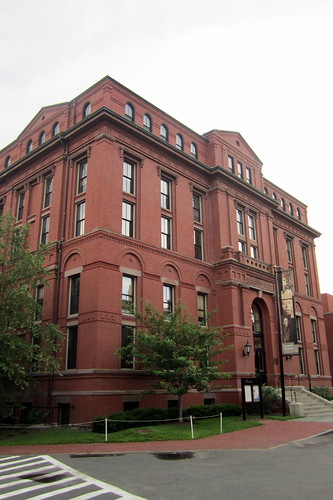Key Dates The temple dates to between 307-310 AD. It was discovered in 1954. London United Kingdom Key People Mithras The Temple of Mithras, or London’s Mithraeum, is a large Roman temple, built between 307-310 AD, dedicated to Mithras, the Persian god of light and the sun (who many believe to be the actual identity of Christ). It is low-built, as it would have represented the cave in which Mithras is thought to have slain the primordial bull. Mithraism emerged as a serious rival to Christianity in the Roman Empire around the second century AD, and was a men-only cult…
-
-
Key Dates Tikal was at its height between 200 and 900 AD Tikal Guatemala Tikal, in the jungles of Guatemala is one of the largest archaeological sites and urban centres of the pre-columbian Mayan civilization and was at its height between 200 and 900 AD. The park contains 222 square miles of jungle, and the residential area of Tikal itself covers 23 square miles encompassing 1000s of structures of which very few have been excavated. The University of Pennsylvania took 13 years to uncover 10 square miles of architectural remains, so there are most likely a number of structures in…
-
Key Dates The museum was founded in 1938. In 1966, the museum and its contents were donated to the public by Alexander Keiller’s widow. Wiltshire United Kingdom Key People Alexander Keiller was an English archaeologist and businessman who excavated at Avebury in the 1930s, and re-erected many of its fallen and buried stones. The Alexander Keiller Museum documents the history of the nearby prehistoric stone circle of Avebury, in particular archaeological excavations that have taken place there. It’s housed in an old 17th century stables and threshing barn. Most of the exhibits date from the Neolithic and Early Bronze Age…
-
Key Dates City Wall of Xian is an extension of the old Tang Dynasty structure, as a result of the wall-building campaign ordered by Zhu Yuanzhang, the first emperor of Ming Dynasty (from 1370 A.D.- 1375 A.D). Xian China Key People Zhu Yuanzhang City Wall of Xian is an extension of the old Tang Dynasty structure, as a result the wall-building campaign ordered by Zhu Yuanzhang, the first emperor of Ming Dynasty (from 1370 A.D.- 1375 A.D). After the enlargement, the city wall stands 12 meters, 12-14 meters across the top, 15-18 meters thick at bottom and 13.7 kilometres in…
-
Key Dates Athens has been inhabited continuously for over 7,000 years. It became ancient Greece’s leading city in the 5th century BC, and went on to enjoy a period of cultural richness beyond parallel, before experiencing mixed fortunes in the Byzantine, Crusader and Ottoman periods. It became the capital of an independent Greek state in 19th century. Athens Greece Key People Athens is named after the Greek goddess Athena, daughter of Zeus. It’s associated with almost every great name from classical Greece and beyond: philosphers such as Socrates, Aristotle and Plato, dramatists such as Aeschylus, Aristophanes, Euripides and Sophocles, statesmen…
-
Attribution: jpmiss Sahara Desert Algeria Key Dates The earliest prehistoric paintings probably date to 9000 BC. The prehistoric rock paintings of Tassili n’Ajjer in the Sahara desert in Algeria, probably date from 9000 BC on. They were made during a period when the climate was wetter than now and the Sahara was closer to savannah than desert conditions, and therefore able to support greater human occupation as is evident from finds of stone tools and ancient rubbish heaps as well as the rock art itself. The rock art can be classified into the following periods: the Bubalus period (from c.9000 BC), the Roundhead period (c.6000-4000 BC),…
-
Attribution: Wally Gobetz Key Dates The Peabody Museum was founded in 1866 by George Peabody and is one of the oldest museums in the world devoted to anthropology. Cambridge United States The Peabody Museum of Archaeology is affiliated with Havard University, and has one of the most comprehensive collections of North American archaeology and ethnology in the world. Founded by philanthrophist George Peabody in 1866, the museum boasts a vast collection numbering over 6 million objects, the majority of which are of archaeological artefacts. The Peabody Museum has played an active part in the history of American anthropology and in…
-
Key Dates Built between 160 and 174 BC. First archaeological digs commenced in the 1850s; performances started to be staged there again from 1867 and continue to be staged there to this day. The seats and stage were replaced in the 1950s. Athens Greece Key People The Odeon was built by the wealthy Greek rhetorician Herodes Atticus in memory of his wife, Aspasia Annia Regilla. Originally constructed as a music venue, the Odeon of Herodes Atticus – which lies on the southern slope of the Acropolis of Athens – is a spectacular 80-metre diameter ancient amphitheatre. Its steep stepped slopes…
-
El Zotz Guatemala El Zotz is a Mesoamerican archaeological site of the pre-Columbian Maya civilization, located within the San Miguel la Palotada National Park in the Petén Basin region. The area has caves and swamps and is known for the hundreds of thousands of bats that fly out from under the cliffs at sunset. El Zotz is a medium sized site covering an area of perhaps 0.75 by 0.75km that includes a variety of large and small architectural remains in a style typical of the Early Classic. It has at least two ceremonial centres, one within the site core, the…
-
Attribution: Wikimedia Commons Key Dates The museum was founded in 1823. Bogotá Colombia The Colombian National Museum is the largest in Colombia, and is located in a huge building complex in the capital city Bogotá. he building itself was constructed in 1823, and was based on the Panopticon, an Orwellian prison devised by 18th century British social philosopher Jeremy Bentham (whose ‘mummy’ now resides in London’s UCL). The museum’s collections number over 20,000 pieces spanning thousands of years of Colombian and pre-Colombian history, from 10,000 BC to the 20th century. 2,500 items are on display at the museum, whose departments…





